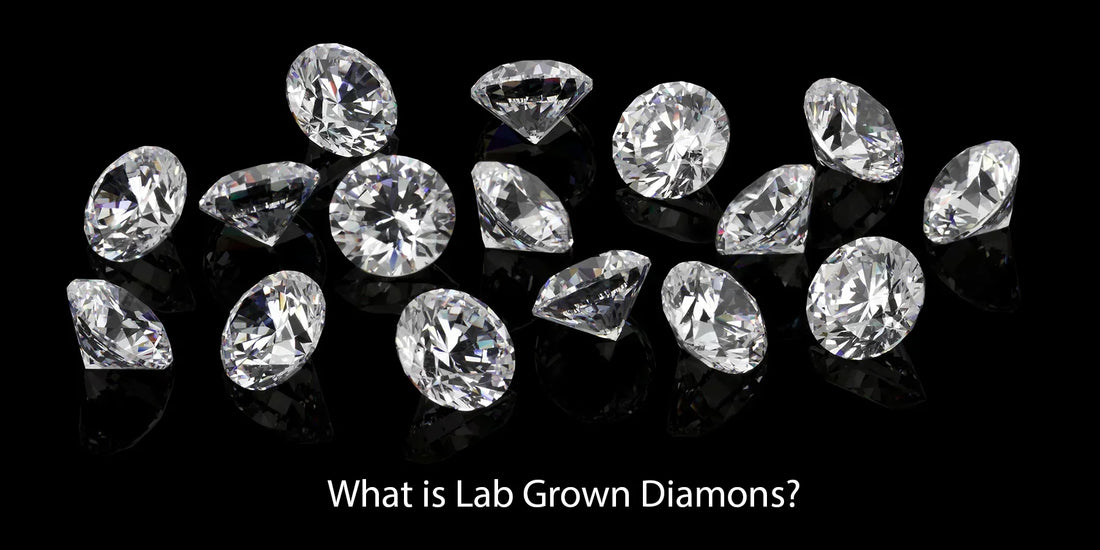
What is a Lab-Grown Diamond?
You Have Always Thought That Your Diamond is One-of-a-kind and is One of Your Most Prized Possessions. Indeed, They Are but There is Something Else on the Scene, the Lab-grown Diamonds. This Information is for Diamond Enthusiasts Who Wish to Ensure They Buy a Natural or Diamond Manufactured in the Lab. Lab-grown Diamonds Are Physically and Optically Identical to Natural Diamonds and Are Available in Colorless and Fancy Colors. Riant Fine Jewelry Guides You Further to Find the Differences Between Both Pieces.
What is a Lab-grown Diamond?
People Sometimes Refer to Lab-grown Diamonds as Man-made or Lab Diamonds. The Main Difference Lies in the Origin of This Diamond. They Are Identical to the Natural Diamond and Crafted Using Cutting-edge Methods and Technologies. In the Lab, Experts Process Man-made Diamonds Using Two Techniques- High Pressure High Temperature, and Chemical Vapor Deposition. The Process in Both Cases Starts With a Diamond Seed, as Thick as Human Hair. In These Methods; Growing Conditions Are the Same as in the Earth’s Mantle (Earth’s Inner Layers). The Carbon Atom Forms Upon the Seed Using the Pressure, High Temperature, and the Storm of Gases, and Layer After Layer, the Seed Crystallizes Into a Raw Diamond.

The Journey Behind Lab-grown Diamonds
High-quality Characteristics Drive the Need for Lab-grown Diamonds. The Production of Such Diamonds Largely Depends on the Craftsmanship of the Scientists and Engineers. Skilled Technicians Work in Facilities Equipped With Advanced Technologies. Through Their Dedication and Modern Technologies, They Produce Flawless Lab-created Diamonds to Meet the Fine Standards of Real Diamonds. Diamonds in the Lab Grow Over Several Weeks and Months. We Break Down the Steps of the Brilliant and Remarkable Journey.
- Small Diamond Seed is the Foundation to Produce Lab-grown Diamonds.
- They Place a Seed in a Chamber Filled With Carbon-rich Gases That Are in Controlled Temperature and Pressure. Carbon Atoms Under This Pressure and Heat Bond With the Seed and Crystallize.
- Over Time, Carbon Atoms Crystallize on the Seed Eventually Forming a Lab-grown Rough Diamond.
- Throughout the Process, Technicians Manage the Growth and Other Details, Such as Monitoring the Conditions Within the Chamber and Adjusting the Different Parameters to Achieve Perfect Diamond Growth and Quality.
Type of Lab-grown Diamond
There Are Two Processes to Make a Lab-grown Diamond. HPHT (High-pressure & High-temperature) and CDC (Chemical Vapor Deposition Method)
High-pressure High-temperature Lab Diamonds
Researchers Developed This Technique Din the 1950s to Create Diamonds and Enhance Their Appearance and Color. HPHT is the Abbreviation for High-pressure and High Temperature. In This Process, the Diamonds Are Identical to the Real Diamonds and Share the Same Chemical and Physical Properties as the Naturally Grown Diamonds.
In This Process, Diamond Formation is Faster as Compared to Natural Diamond Formation Which Takes Millions of Years to Form Deep Inside the Mantle Layer of Earth. The Workers Expose the Diamonds to Great Pressure and Heat of 870000 Pounds Per Square Inch and 1300-1600 °c, Respectively. After the Exposed Heat and Pressure, the Carbon Atoms Grow on the Small Seed of the Diamond as a Crystal and a Synthetic Diamond Begins to Form. A Diamond Cutter Then Cools, Cuts, and Enhances This Crystal. This Crystallization Period Takes Several Days to Weeks to Form Diamonds.

Chemical Vapor Deposition Lab Diamonds
In This Mechanism, They Fill a Mixture of Gases Heavy in Carbon is Filled Inside the Vacuum Chamber, Where They Place a Thin Diamond Seed. Then, They Heat the Chamber to 800 °c and Flood It With the Gases. Due to Intense Heat Inside the Chamber, the Plasma Layer Deposits on the Diamond Seed as Crystal Layers. This Crystal Structure Now Looks Like a Pretty Gemstone, Which is a Diamond.

Lab-grown Diamond vs. Natural Diamond
As Such, There Are No Physical Differences Between Both Types of Diamonds. Only Experts and Special Lab Equipment Can Detect the Differences.
The Biggest Difference Between Synthetic and Natural Diamonds is That the Manufacturers Process Synthetic Diamonds in a Controlled Environment, While, Natural Processes Create Natural Diamonds Occurring Deep Within the Mantle of the Earth.
The Specialists Monitor the Speedy Formation of Diamonds Using Artificial Techniques. As Per Them, the Natural Diamonds Contain Tiny Amounts of Nitrogen Which Only Specialists or Gemmologists Can Detect. Also, a Natural Diamond Costs Much More Than a Lab-grown Diamond. Both Types of Diamonds Also Contrast Based on Rarity. Natural Diamonds Are Much Rarer Than the Diamonds Processed in Labs. Because of Rarity or Low Quantity, People Preserve Natural Diamonds as Treasures and Pass Them on From Generation to Generation.

